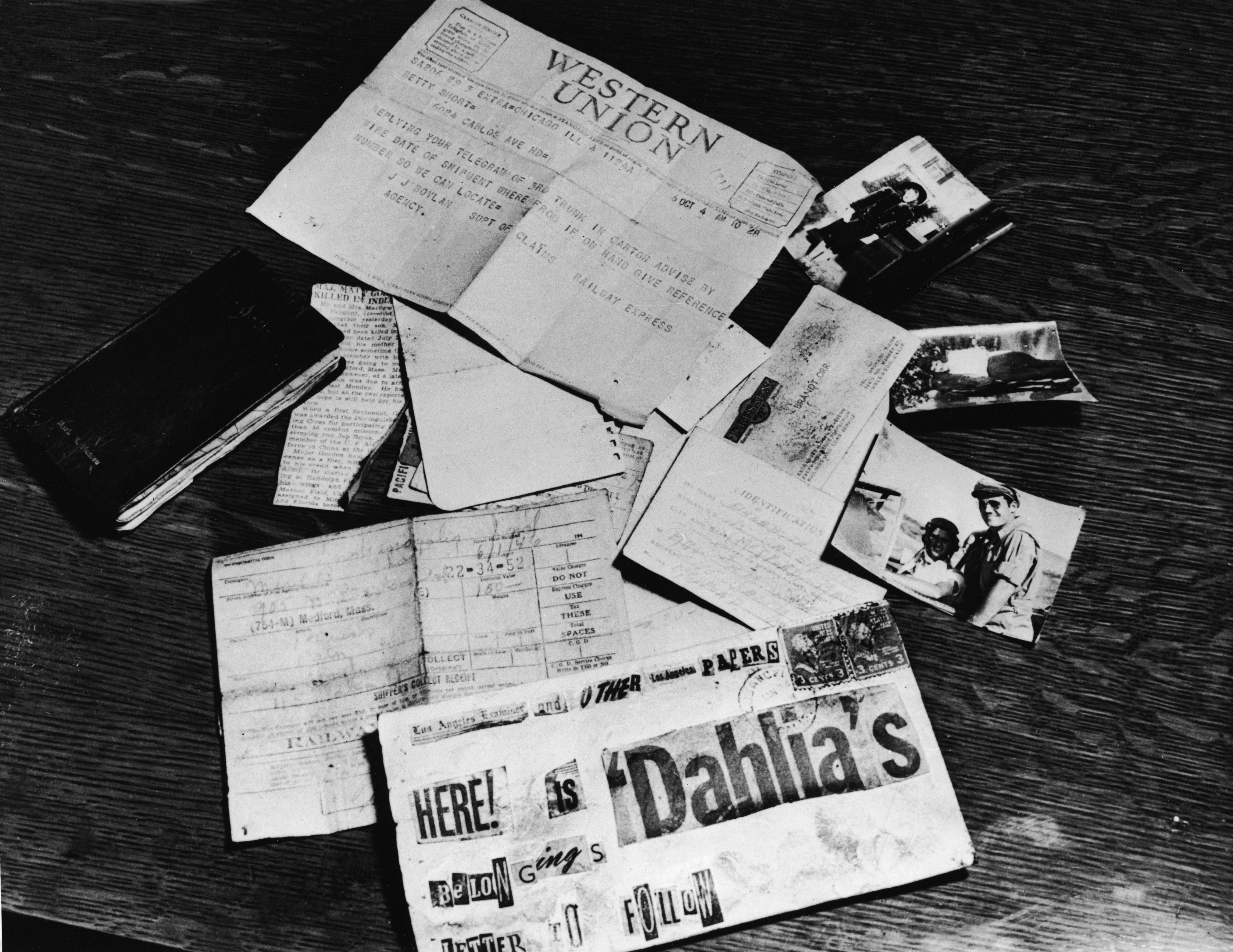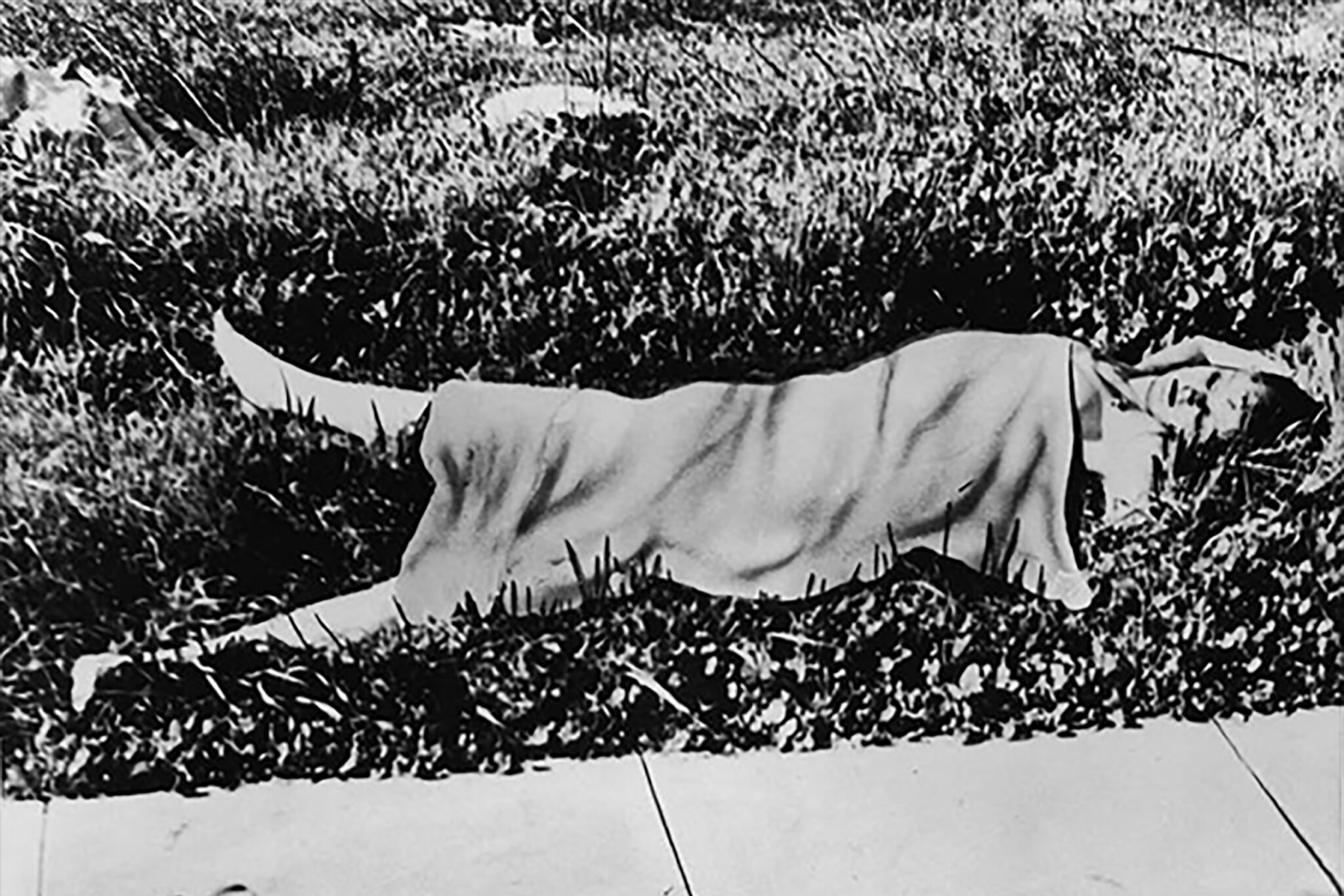On January 15, 1947, the mutilated body of Elizabeth Short, a 22-year-old aspiring actress, was discovered in a vacant lot in Los Angeles, California. Her gruesome murder, characterized by its shocking brutality and the meticulous staging of her body, sent shockwaves across the nation. Known posthumously as the "Black Dahlia," Short's case became an instant media sensation, drawing public fascination and sparking countless investigations. Despite decades of effort, the identity of her killer remains unknown, leaving the crime shrouded in mystery. The crime scene itself was a chilling tableau that has puzzled investigators and true crime enthusiasts for generations. Elizabeth Short's body was found severed at the waist, drained of blood, and posed in a manner that suggested a calculated and deliberate act. The vacant lot where she was discovered became a focal point for detectives, journalists, and onlookers alike, each hoping to uncover a clue that might lead to the killer's identity. The case was further complicated by a series of cryptic letters sent to newspapers, purportedly from the murderer, adding layers of intrigue and misinformation. The Black Dahlia crime scene continues to captivate the public imagination, symbolizing the enduring allure of unsolved mysteries. This article delves into the intricate details of the Black Dahlia crime scene, exploring its historical context, the forensic evidence, and the myriad theories that have emerged over the years. By examining the cultural impact of the case and the ongoing fascination with it, we aim to shed light on why this particular crime has remained so deeply embedded in the collective consciousness. Through a meticulous analysis of the evidence and a review of the most compelling theories, we hope to provide a comprehensive understanding of this haunting case while maintaining a tone that is both informative and respectful to the memory of Elizabeth Short.
- Who Was Elizabeth Short? The Woman Behind the Black Dahlia
- The Black Dahlia Crime Scene: A Gruesome Discovery
- What Evidence Was Found at the Black Dahlia Crime Scene?
- The Investigation: Why Has the Black Dahlia Case Remained Unsolved?
- Cultural Impact: How Has the Black Dahlia Crime Scene Influenced Pop Culture?
- Leading Theories: Who Could Have Committed the Black Dahlia Murder?
- What Role Did Media Play in Shaping the Black Dahlia Narrative?
- FAQs About the Black Dahlia Crime Scene
Who Was Elizabeth Short? The Woman Behind the Black Dahlia
| Full Name | Elizabeth Ann Short |
|---|---|
| Date of Birth | July 29, 1924 |
| Place of Birth | Hyde Park, Massachusetts, USA |
| Date of Death | January 15, 1947 |
| Place of Death | Leimert Park, Los Angeles, California, USA |
| Occupation | Aspiring Actress, Waitress |
| Nicknames | Black Dahlia |
Elizabeth Short, the woman at the center of the Black Dahlia crime scene, was a complex figure whose life and death have been the subject of intense scrutiny. Born on July 29, 1924, in Hyde Park, Massachusetts, Elizabeth was the third of five daughters in a working-class family. Her early life was marked by financial struggles, and her parents' eventual separation forced her to move frequently during her childhood. Despite these challenges, Elizabeth harbored dreams of becoming a Hollywood star, a goal that would eventually lead her to Los Angeles. Elizabeth's journey to Los Angeles was not a straightforward one. After her father's mysterious disappearance in 1930, she and her family faced significant hardships. In her late teens, Elizabeth worked as a waitress and occasionally modeled to support herself. Her striking appearance—dark hair, pale skin, and a fondness for black clothing—earned her the nickname "Black Dahlia," a moniker that would later define her legacy. Elizabeth's move to California in 1946 was driven by her aspirations to break into the film industry, but her time in Los Angeles was fraught with instability. She often stayed with acquaintances or in temporary lodgings, struggling to find steady work. Despite her hardships, Elizabeth Short was known for her charm and vivacious personality. Friends described her as a friendly and outgoing young woman who enjoyed socializing and meeting new people. However, her life was also marked by a series of ill-fated relationships and encounters with individuals who may have exploited her vulnerability. Elizabeth's tragic death transformed her into a symbol of the dangers faced by young women pursuing their dreams in a city often associated with glamour and opportunity. Her story serves as a stark reminder of the fragility of life and the enduring fascination with unsolved mysteries.
The Black Dahlia Crime Scene: A Gruesome Discovery
The discovery of Elizabeth Short's body on January 15, 1947, in a vacant lot in Leimert Park, Los Angeles, marked the beginning of one of the most perplexing chapters in criminal history. The Black Dahlia crime scene was as chilling as it was meticulously staged, leaving investigators and the public alike in a state of shock. Her body was found severed at the waist, drained of blood, and posed in a manner that suggested a calculated act of violence. The scene was devoid of any obvious signs of a struggle, yet the brutality of the act spoke volumes about the killer's intent and precision.
Read also:Discover The Magic Of Movi A Comprehensive Guide To Enhancing Your Entertainment Experience
One of the most striking aspects of the Black Dahlia crime scene was the condition of Elizabeth's body. Her face had been slashed from the corners of her mouth to her ears, creating what is now infamously referred to as the "Glasgow smile." This grotesque mutilation was accompanied by severe injuries to her body, including deep cuts and lacerations. Her body had been cleaned and meticulously arranged, with her arms positioned above her head and her legs spread apart. This deliberate staging suggested that the killer had taken time to prepare the scene, perhaps intending to send a message or create a macabre spectacle for those who would discover her.
The location of the crime scene itself added to the mystery. The vacant lot where Elizabeth's body was found was a quiet, unassuming area, far from the bustling streets of downtown Los Angeles. This choice of location raised questions about the killer's knowledge of the area and their ability to transport the body without detection. The absence of blood at the scene indicated that Elizabeth had been killed elsewhere and brought to the lot post-mortem, further complicating the investigation. The Black Dahlia crime scene became a focal point for detectives, who meticulously combed the area for clues, hoping to uncover evidence that might lead to the identity of the perpetrator. Despite their efforts, the case remains unsolved, leaving the crime scene as a haunting reminder of the killer's elusiveness and the enduring mystery surrounding Elizabeth Short's death.
What Evidence Was Found at the Black Dahlia Crime Scene?
The Black Dahlia crime scene presented investigators with a perplexing array of evidence, each piece offering tantalizing clues yet failing to paint a complete picture of the killer's identity. One of the most notable pieces of evidence was the condition of Elizabeth Short's body itself. The meticulous staging and the absence of blood suggested that the killer had taken great care in preparing the scene. This level of detail pointed to someone with a specific intent, perhaps aiming to send a message or create a spectacle. The "Glasgow smile" carved into her face was particularly chilling, indicating a level of sadism and control that has been the subject of much speculation.
Forensic analysis of the crime scene revealed additional clues that have intrigued investigators for decades. Despite the lack of blood at the scene, trace evidence such as fibers and soil samples were collected. These materials were analyzed in the hopes of linking them to a specific location or individual. However, the technology available in 1947 was limited, and many of these samples could not be fully utilized at the time. Modern advancements in forensic science have allowed for re-examination of some of these materials, yet they have not yielded definitive answers. The absence of a murder weapon further complicated the investigation, leaving detectives with more questions than answers.
Another significant piece of evidence was the series of cryptic letters sent to local newspapers following the discovery of Elizabeth's body. These letters, purportedly from the killer, contained taunts and challenges to the police, adding layers of intrigue and misinformation to the case. The authenticity of these letters has been debated, with some suggesting they were hoaxes designed to mislead investigators. Despite this, they provided insight into the psychological profile of the killer, indicating a need for attention and a desire to manipulate public perception. The combination of physical evidence and these cryptic communications has kept the Black Dahlia crime scene at the forefront of true crime discussions, as each new theory and discovery brings us closer to understanding this haunting case.
The Investigation: Why Has the Black Dahlia Case Remained Unsolved?
The investigation into the Black Dahlia crime scene was marked by a flurry of activity, yet it ultimately fell short of identifying the perpetrator. Detectives faced numerous challenges from the outset, not least of which was the overwhelming public interest in the case. The media frenzy surrounding Elizabeth Short's murder created a climate where misinformation spread rapidly, complicating efforts to separate fact from fiction. The sheer volume of tips and leads generated by the public, many of which were unreliable or outright false, overwhelmed investigators and diverted resources away from more promising avenues of inquiry.
Read also:Discover The Ultimate Guide To 4k S Download Your Gateway To Stunning Visuals
One of the primary hurdles in the investigation was the lack of concrete forensic evidence. While trace materials such as fibers and soil samples were collected, the technology of the 1940s was insufficient to extract meaningful data. The absence of blood at the crime scene suggested that Elizabeth had been killed elsewhere, but the original location of the murder remains unknown. This gap in the timeline of events left investigators with a fragmented narrative, making it difficult to reconstruct the sequence of events leading to her death. Additionally, the condition of Elizabeth's body, meticulously cleaned and posed, indicated a level of sophistication that suggested the killer was either experienced or had a deep understanding of forensic science.
Despite these challenges, several key suspects emerged over the years, each with their own compelling narrative. One of the most notable was Dr. George Hodel, a prominent Los Angeles physician whose son, Steve Hodel, later became a detective and investigated his father's potential involvement. Dr. Hodel's connections to the LAPD and his alleged history of violent behavior made him a person of interest, though no definitive evidence linked him to the crime. Another suspect was Leslie Dillon, a bellhop with a fascination for true crime, who was interrogated extensively but ultimately released due to lack of evidence. The investigation also considered numerous other individuals, including military personnel and local criminals, yet none were conclusively tied to the murder. The Black Dahlia case remains unsolved, a testament to the complexities and challenges faced by investigators in piecing together one of the most infamous crimes in history.
Cultural Impact: How Has the Black Dahlia Crime Scene Influenced Pop Culture?
The Black Dahlia crime scene has left an indelible mark on popular culture, inspiring countless works of literature, film, and art that continue to captivate audiences worldwide. The case's enduring allure lies in its combination of mystery, brutality, and unanswered questions, which have made it a staple of true crime fascination. Books such as James Ellroy's "The Black Dahlia," which fictionalizes the investigation while staying true to the haunting essence of the case, have introduced new generations to the story. This novel, along with its film adaptation directed by Brian De Palma, brought the Black Dahlia crime scene to life on the big screen, blending historical detail with dramatic storytelling


